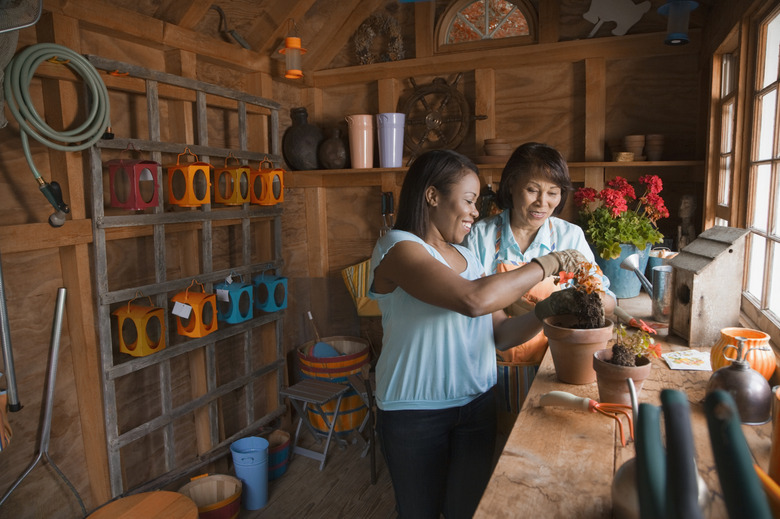How To Repot Philodendron Vines
Philodendrons (Philodendron spp. and hybrid) are vining plants prized for their shade tolerance and broad, attractive leaves. Hardiness varies by species, but many are frost tender, and will survive outdoors only in U.S. Department of Agriculture plant hardiness zones 10 through 12. Philodendrons are grown as houseplants across a much broader range, but take care around children and pets: Philodendrons are poisonous. Regularly repotting your philodendrons will keep them from becoming root bound, and will encourage vigorous growth. You can divide a crowded philodendron into several smaller plants at the same time as you repot it.
Step 1
Step 1
Water the philodendron well about a day before you plan to repot it. This will minimize stress to the plant, and make it easier to work with.
- Philodendrons (Philodendron spp.
- Philodendrons are grown as houseplants across a much broader range, but take care around children and pets: Philodendrons are poisonous.
Step 2
Step 2
Select a new container for the philodendron or multiple containers if you want to divide the plant. Choose a container 1 to 2 inches larger than the philodendron's current container and make sure any container has ample holes for drainage. If you are reusing an old container, make sure it is free of debris and pathogens by removing all large dirt clods or plant pieces and soaking the container in a bleach solution or wiping it down with a household disinfectant and rinsing the cleaner off with clear water.
Step 3
Step 3
Place about an inch of high-quality, well-drained potting soil in the bottom of the prepared container.
Step 4
Step 4
Wear work gloves to protect your skin from contact with philodendron sap. Frequent contact with the poisonous sap can cause skin rash.
Step 5
Step 5
Slide the philodendron's root mass out of its current container. Turn the plant on edge, with one hand cradling the soil surface while you use your other hand to slide the container off. You may need to hold the plant nearly upside-down and tap the lip of the container against the edge of a counter or other structure to encourage the root mass to slide out.
- Select a new container for the philodendron or multiple containers if you want to divide the plant.
- Choose a container 1 to 2 inches larger than the philodendron's current container and make sure any container has ample holes for drainage.
Step 6
Step 6
Inspect the philodendron's root mass. Use a sharp knife to trim off any roots that are brown and soft. Healthy roots are firm and white. If the plant is root-bound, with roots growing in a tight circle around the circumference of the root mass, make four vertical cuts about an inch deep evenly spaced around the root mass and cut an "X" into the bottom of the root mass. If you are dividing the philodendron into multiple plants, use your glove-protected fingers and a sharp knife to tease the root mass apart, cutting cleanly through any stubborn roots. Make sure each section of root mass has a proportionate amount of stems.
Step 7
Step 7
Set the philodendron root mass in the prepared container, adding or removing soil under the roots so that the soil surface around the plant stem is about an inch below the container's lip.
- Inspect the philodendron's root mass.
- Set the philodendron root mass in the prepared container, adding or removing soil under the roots so that the soil surface around the plant stem is about an inch below the container's lip.
Step 8
Step 8
Fill in the space around the philodendron root mass with high-quality potting soil, gently firming the soil down as you add it to remove major air pockets.
Step 9
Step 9
Water the newly potted philodendron slowly and thoroughly until water begins to trickle out of the container's drain holes. Add more soil, if needed, to account for any settling that occurred as a result of the watering.
Warning
Keep philodendrons out of the reach of small children or pets who could nibble on this plant. All parts of this plant are poisonous, containing oxalate crystals which can pierce the mouth, throat, and digestive tract if even small amounts of the philodendron are consumed. Symptoms of consumption include swelling and burning of the lips, mouth and throat and difficulty speaking, sometimes accompanied by vomiting and diarrhea.Very frequent contact with the sap of the philodendron can cause skin irritation.
Things Needed
- Work gloves
- Container with drain holes
- Disinfectant, if needed
- High-quality, well-drained potting soil
- Sharp, clean knife
